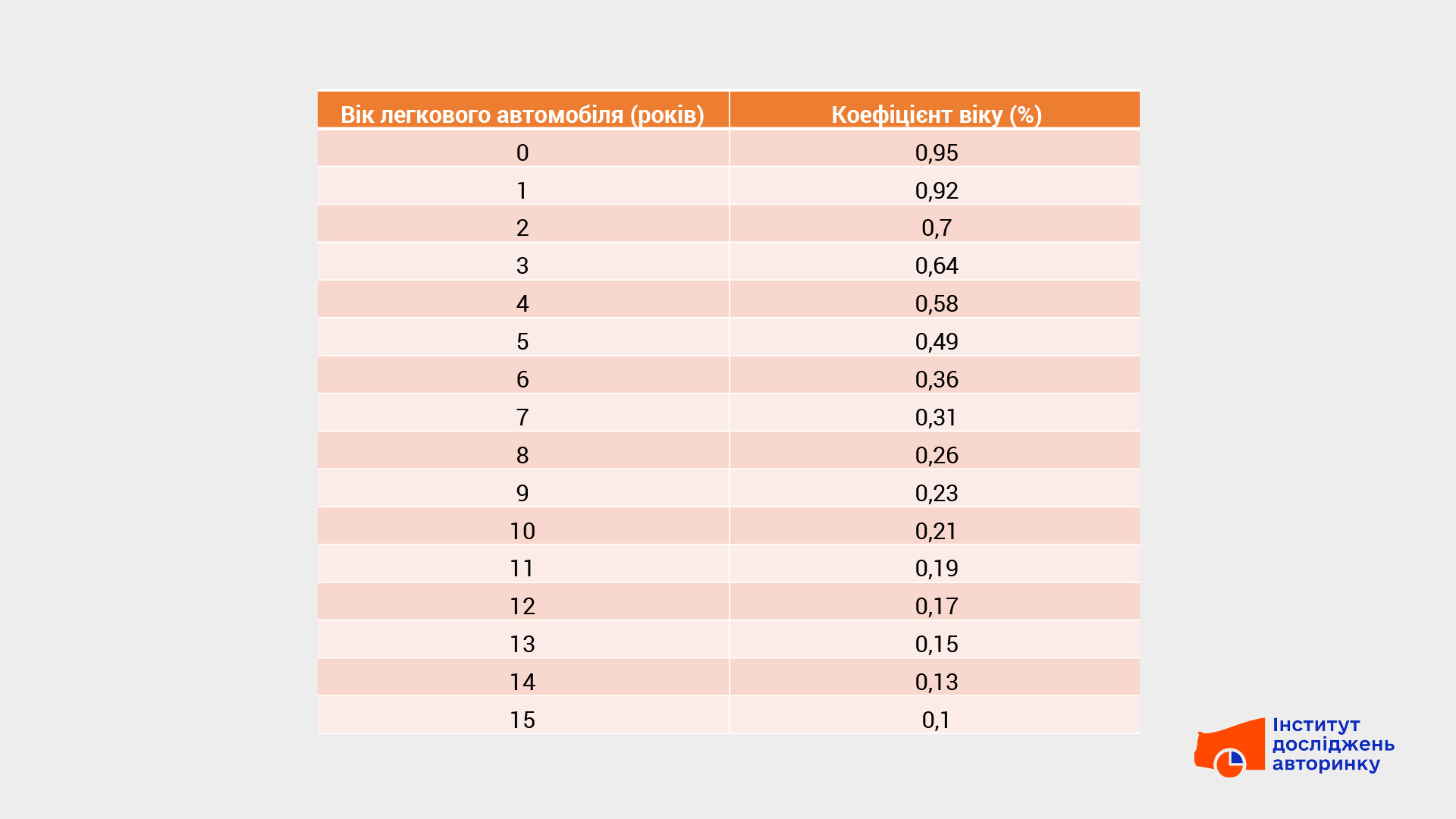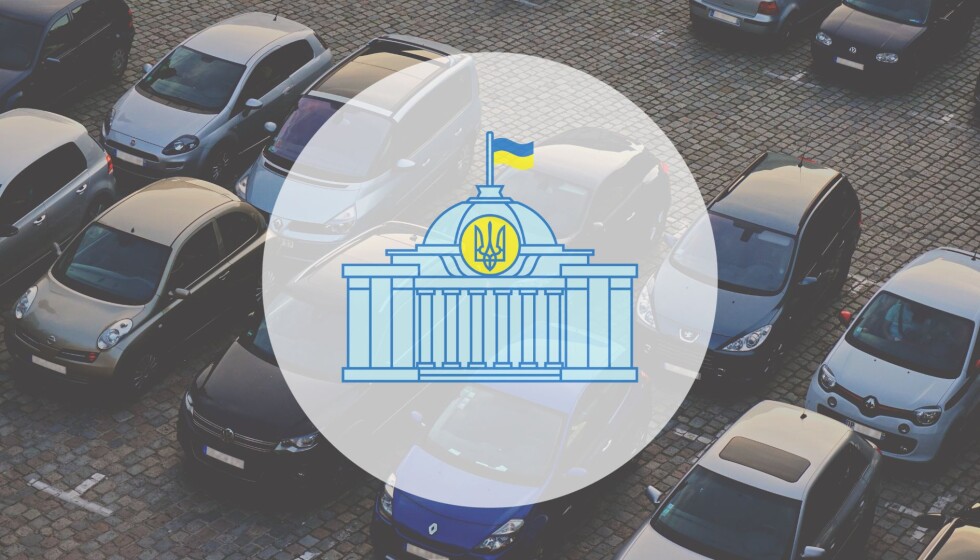The Verkhovna Rada has registered a new draft law, which, if passed, will introduce the announced customs clearance of cars in a smartphone. Specialists of the Institute of Car Market Research studied the new initiative, outlined the key points of the draft law and their own conclusions regarding its likely impact on the car market.
On December 26, 2023, a group of Peopleʼs Deputies registered draft law No. 10380 "Draft of the Law on Amendments to Chapter XXI "Final and Transitional Provisions" of the Customs Code of Ukraine and other laws of Ukraine regarding the peculiarities of carrying out customs declaration of passenger cars by means of the Unified State Web Portal of Electronic Services".
The task of the project, as stated in the explanatory note to it, is to simplify and speed up the customs clearance of passenger cars, for which it is proposed to create the possibility of electronic declaration of such vehicles using the Unified web portal of electronic services (Portal Diya). A mobile application is also part of this web portal, so it is about customs clearance in a smartphone, the idea of which has been discussed since 2021.
It should also be noted that the proposed mechanism is temporary and will operate until Ukraine acquires the status of a member of the European Union.
It is important that both individuals and legal entities, as well as persons authorized by the declarant, will be able to use it. That is, companies — car dealers that trade in used cars will be able to bring a car from abroad and clear it through customs with the help of a smartphone. You can not bring the car in person, but, for example, by proxy.
Opportunities are new, taxes are old
The legislative initiative, unlike the previous attempt, which did not receive sufficient support from the Peopleʼs Deputies, does not provide for any changes regarding the collection of taxes and their rates. That is, customs duty, excise duty and value added tax remain the same as they are now. Only the mechanism of customs clearance changes. At the same time, if a change in taxes does happen in the future, it will not affect the customs clearance of cars in Diya.
Other categories of cars — trucks, tractors, buses, trailers and semi-trailers, as well as special vehicles and motor vehicles will be processed according to the usual procedure.
A new car evaluation mechanism
The main problem solved by the draft law is the leveling of the human factor when determining the customs value of a car, from which the amount of customs payments is calculated, and the reduction of corruption risks as a result. Popular schemes that exist today will partially lose their meaning. For example, it will not make sense to falsify car sales contracts, indicating a lower value, indicating non-existent damage and artificially increasing the mileage of the car. In the new system, these factors will not affect the amount of taxes that will have to be paid.
Peopleʼs deputies propose to evaluate cars automatically, based on the price of similar new cars, and to reduce the price of a specific car based on the table of coefficients.

For this, the Cabinet of Ministers should create a Database of the customs value of passenger cars, the holder of which will be the Ministry of Statistics, and the technical administrator will be a state enterprise, which will be determined by the Cabinet of Ministers.
Since this Database does not exist at the moment, it is impossible to make any calculations regarding the probable customs value of cars, and in general there are many questions before filling it. The main points that the experts of the Institute of Car Market Research pay attention to:
- it is not clear which prices of new cars will be taken as a basis: whether it will be the customs value when imported into Ukraine (before taxation), or the customs value already taking into account taxes, or the selling price from the dealerʼs price list;
- it is not clearly defined which countryʼs price will be used when determining the value of a new car, and how to determine the value for models of the same name that are sold with a significant difference in price in different markets. For example, the price of the Volkswagen ID.4 in Germany starts at $46,000, and in China it costs half as much.
- it is not known where to get prices for new cars, if the desired model was not imported new by official importers to Ukraine, and there are quite a lot of such cars. As of today, cars are imported to Ukraine from the EU (about 60%), America (about 25%), South Korea, China and other countries. A significant part of them was produced specifically for local markets.
- it is not clear how to determine the objective value for models that do not have standardized equipment, and each car is made to order (for example, Tesla).
Also, customs clearance "in a new way" is unlikely to suit the importers of auction cars from the USA, who have a clear price indicated in the accompanying documents, which may be several times lower than determined by the table of coefficients. And although now the electric cars given here as an example have the so-called "zero customs clearance", over time it will cease to be so, and even with it, it is necessary to indicate the estimated value of any car, regardless of customs clearance benefits.
Only two documents for customs
To import a passenger car, the declarant must provide a registration document for the car (if available), and a document of ownership — a sales contract or an invoice, if the car is not registered to the person who wants to clear it through customs.
At the same time, the draft law prohibits demanding from the declarant or a person authorized by him any other documents other than those specified in this paragraph.
Also, a document about deregistration of the car in the country of departure is not required.
That is, in order to clear customs on a car in a smartphone, only one or two documents will be enough.
A comprehensive list of information for customs
During customs clearance of a car with the help of Diya, you need to provide only basic data. They will be enough for customs clearance:
1) information about the declarant;
2) information about the person responsible for financial settlement;
3) financial and banking data (in case of submission of a declaration by the enterprise);
4) information about the car:
a) product code according to UCT ZED;
b) year of manufacture;
c) brand;
d) commercial description (model);
e) identification number (VIN);
e) fuel type or energy source;
f) engine volume;
g) name of the country of origin;
g) the name of the country of departure;
h) invoice value.
It is forbidden to request any other information.
You can import a car without a Euro, register it only with a certificate
A certificate of compliance is not required for customs clearance, as the draft law provides for changes under which the certificate will be required only before the first registration.
That is, in practice, it will be possible to import any passenger car, including a retro one, which does not meet any eco-standards, to clear customs, but it will be impossible to obtain license plates and use it as a vehicle.
Customs clearance — at the checkpoint, in one hour
The draft law states verbatim that the customs clearance of a passenger car is completed in the shortest possible time, but no more than one hour from the moment the passenger car is presented to the customs authority, the customs declaration and all necessary documents and information are submitted.
All customs formalities must take place directly at the border crossing point through which the vehicle concerned is imported.
That is, if you have entered all the data in Diya correctly, paid the customs fees, from the moment of arrival at the checkpoint, the passenger car must clear customs directly at the checkpoint within one hour.
There are backup options if there is a technical failure or a similar reason that makes it impossible to fit in the hour, but we will not describe them in detail yet.
If there is no data about the car — the "old" evaluation procedure
If there is no information about a certain model in the Database of the customs value of cars, or if the customs authority has reason to believe that the declarant has provided inaccurate data about the value of the car, then the customs value will be adjusted. In this case, the declarant will receive a written notification about the application of such an adjustment, and the assessment procedure will be carried out "in the old way", that is, according to the system of determining the customs value in force today.
How can customs clearance in Diya affect the car market?
According to the experts of the Institute of Car Market Research, the described initiative opens up new opportunities for the import of passenger cars, in particular by citizens themselves, and reducing the bureaucratic burden on legal entity importers. Transferring a significant number of stages of customs clearance to remote electronic form reduces corruption risks. Clear lists of documents and data required for customs clearance also help reduce corruption risks.
At the same time, there are questions regarding the construction of the Customs Value Database. There are hundreds of variations of generations and modifications of passenger cars on the market, special configurations, as well as versions for different markets. How well it will be possible to fill this Database, as well as in what time, will be seen only in practice.
Regarding the import of used cars from American countries, it is obvious that the evaluation of auction cars on the scale of new ones is unlikely to correspond to the reality and expectations of the declarants. Accordingly, this mechanism will most likely be applied only (or mainly) to cars from Europe (about 60% of imports). Customs clearance of cars from American countries will probably take place according to the rules currently in force.
The project concerns only an exhaustive list of passenger cars, for all other types of vehicles simplified options for customs clearance have not yet been proposed.
Considering the need for considerable preparatory work (creation of the Database of the customs value of cars, relevant sections on the Diya Portal, electronic communications between departments involved in customs clearance), the time for physical implementation of such a mechanism may be about a year or more.
As for the chances of draft law No. 10380 becoming a law, they are quite high, considering the list of authors, as well as the support promised at the recent Diia.Summit event for the introduction of "customs clearance in Action" from the President, the Chairman of the Verkhovna Rada and the Prime Minister.
Subscribe to the Telegram channel of the Auto Market Research Institute to be the first to receive information without advertising or spam.



